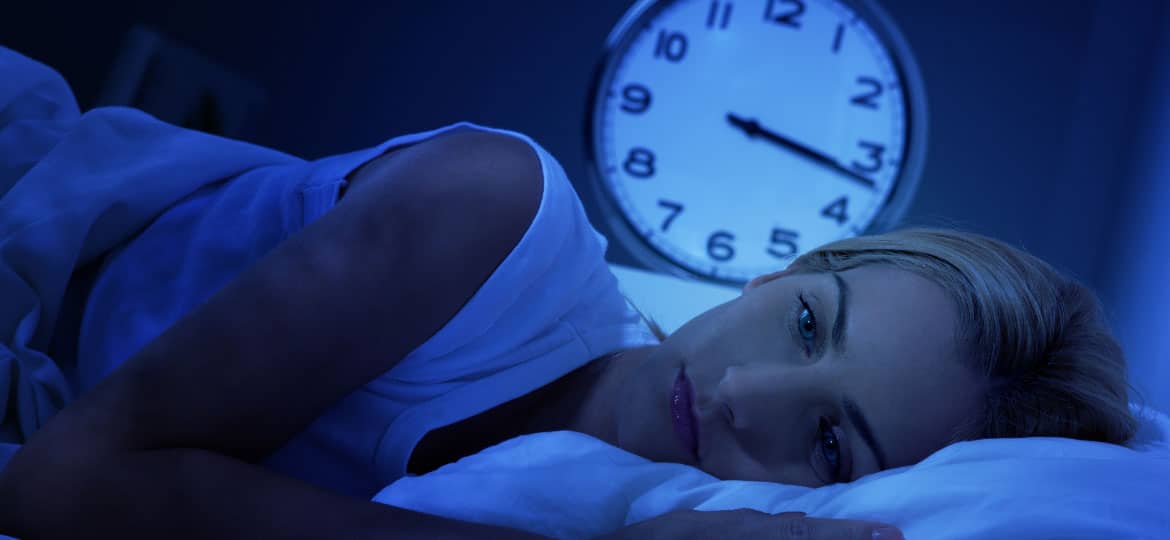*Rate Increase Notice* Starting September 1, 2025 rates for our Psychologists will be increasing to 235$ / 50min session.


Our Calgary Psychologist Clinic’s therapists are experienced in CBT-i and help our clients to find ways to improve their sleep. Cognitive Behavioral Therapy for Insomnia (CBT-I) is a psychological treatment approach that has gained recognition for effectively addressing the challenges associated with insomnia. With the guidance of a psychologist, CBT-I aims to modify negative thought patterns and behaviors that contribute to sleep difficulties, helping individuals regain control over their sleep patterns and improve overall sleep quality.
The core principles of CBT-I revolve around identifying and addressing the underlying causes of insomnia. This therapy recognizes that psychological factors such as anxiety, stress, and negative thought patterns can perpetuate sleep disturbances. By targeting these factors, CBT-I assists individuals in developing healthier sleep habits and reducing the frequency and intensity of insomnia symptoms.
CBT-I typically begins with a comprehensive assessment by a psychologist to understand the unique factors contributing to a person’s insomnia. This assessment may include an evaluation of sleep patterns, bedtime routines, lifestyle factors, and emotional well-being. With this information, the psychologist tailors the treatment plan to suit the individual’s specific needs.
One common technique used in CBT-I is stimulus control therapy. This approach aims to strengthen the association between the bed and sleep while breaking the association between the bed and wakefulness. It involves creating a sleep-friendly environment, establishing consistent sleep and wake times, and avoiding stimulating activities in bed. By reshaping these associations, individuals can experience a more restful and consistent sleep pattern.
Another key component of CBT-I is sleep restriction therapy. This technique helps regulate the sleep-wake cycle by initially limiting the amount of time spent in bed. Gradually, as sleep efficiency improves, the time spent in bed is increased. This process helps individuals consolidate their sleep, reduce time spent awake in bed, and strengthen the connection between bedtime and sleep.
Cognitive therapy is also an essential element of CBT-I. It focuses on challenging and reframing negative thought patterns and beliefs related to sleep. By replacing these thoughts with more positive and accurate ones, individuals can reduce anxiety, improve sleep quality, and develop a healthier mindset around sleep.
Additionally, relaxation techniques and sleep hygiene education are often incorporated into CBT-I. These techniques may include progressive muscle relaxation, deep breathing exercises, and strategies for creating a calming pre-sleep routine. Sleep hygiene education involves providing guidance on lifestyle factors that can impact sleep, such as exercise, caffeine intake, and exposure to electronic devices before bed.
CBT-I is recognized as an evidence-based treatment for insomnia and has shown promising results in numerous studies. It is often recommended as a first-line treatment option and can be effective as a standalone treatment or in combination with other interventions. By addressing both the cognitive and behavioral aspects of insomnia, CBT-I equips individuals with valuable tools and strategies to manage sleep difficulties and achieve long-term improvements in sleep quality and overall well-being.
Jarret Verwimp
Clinical Canadian Certified Counsellor
English, French, Spanish (basic)
Andrea Krygier
Registered Psychologist
English, Spanish
Dr. Raheleh Tarani
Registered Provisional Psychologist
English, Farsi, Japanese (basic), Hindi, Turkish, Punjabi, Urdu
Murray Molohon
Registered Psychologist
English
Millions lie awake at night and watch the clock tick away. Sleep medications only give temporary relief, but CBT-I offers lasting solutions by targeting the mechanisms of sleep problems. This proven treatment blends behavioral changes, cognitive restructuring, and sleep education to help patients build healthy sleep patterns.
This complete guide shows how CBT-I works through its core parts and scientific proof. You’ll find the step-by-step treatment plan and learn what therapy involves. The guide also teaches you to put these tested strategies to work for better sleep.
Research shows how sleep disruption happens through complex interactions in the brain’s preoptic hypothalamus region. The brain’s glutamatergic neurons activate rhythmically during non-rapid eye movement sleep and affect overall sleep quality [1].
The Science of Sleep Disruption
Sleep problems affect between 33-50% of adults, while 7-18% have an insomnia disorder [2]. Poor sleep patterns can trigger several health problems. These include cognitive decline, weakened immune function, and metabolic disorders [3].
How CBT-I Changes Sleep Patterns
CBT-I helps the body’s natural sleep mechanisms work better through several key elements:
Proven Results
Research strongly supports CBT-I’s effectiveness. 70-80% of patients with primary insomnia see significant improvements [4]. Patients fall asleep faster, stay asleep longer, and wake up less during the night [4].
These benefits last up to 24 months after treatment ends [5]. Sleep duration keeps improving, and patients sleep about 50 minutes longer during follow-up periods [5].
Studies show CBT-I matches the effectiveness of sleep medication without side effects and has lower relapse rates [2]. The American College of Physicians now recommends CBT-I as the first treatment choice for adult patients [4].
Chronic insomnia creates psychological challenges that go way beyond the reach and influence of nighttime sleep difficulties. Research shows that approximately 50% of people with insomnia also struggle with a mental health condition [6].
Note that chronic insomnia affects many aspects of psychological well-being. Studies reveal 90% of people with major depressive disorder have insomnia-related sleep disturbances [7]. Mental health effects include:
The connection between sleep and anxiety creates a complex cycle. Research shows 50-80% of adults with mental health conditions struggle to fall or stay asleep in a typical year [7]. More than that, this two-way relationship means anxiety disrupts sleep and creates a sleep debt that makes anxiety symptoms worse [8].
Breaking free from chronic insomnia needs both psychological and behavioral changes. A patient’s psychological profile typically has obsessive thoughts, anxious tendencies, and ruminative personality traits [9]. Cognitive behavioral therapy helps patients spot and change unhelpful sleep-related thoughts. To cite an instance, see how thoughts like "I’ll be a wreck tomorrow if I don’t sleep" transform into more helpful points of view [10].
Research proves that changing these negative thought patterns brings exceptional improvements. This shows in the 87% success rate among CBT-I patients who keep their progress even after finishing treatment [11].
The standard cognitive behavioral therapy for insomnia follows a well-laid-out six-week timeline. Patients attend sessions weekly or bi-weekly [11]. A complete 60-90 minute pre-treatment assessment helps establish the patient’s baseline sleep patterns [11].
The treatment has these stages:
Most patients see major improvements in their sleep patterns by week four. Many say that "sleep is no longer a battlefield" [10]. Between weeks 4-6, patients feel less anxious about sleep and gain confidence in knowing how to keep healthy sleep patterns [10].
Multiple metrics show how well the treatment works. CBT-I reduces sleep latency from baseline averages of 60 minutes to approximately 30 minutes [12]. On top of that, wake-after-sleep-onset times drop by 22-37 minutes [13].
Success rates reach 70-80% during acute treatment [12], and patients keep these improvements for up to 24 months after treatment [12]. Research shows total sleep time gets better gradually after completing treatment [12]. Patients who finish the full protocol fall asleep more easily and wake up less during the night [10].
Cognitive behavioral therapy for insomnia has three main therapeutic components that target different sleep challenges. Studies show that standard CBT-I treatment delivers these components over six to eight sessions. These sessions typically last between 30 to 90 minutes [11].
Sleep restriction therapy helps increase sleep drive and improves sleep quality [11]. The approach matches bed time with actual sleep duration instead of limiting sleep itself. Someone who sleeps 6 hours but stays in bed for 9 hours would start with a 6-hour window [3]. The prescribed time should stay above 5.5 hours, regardless of how little someone sleeps [3].
Stimulus control therapy creates a stronger link between bed and sleep while reducing its connection to being awake. These guidelines work best:
Cognitive therapy tackles unhelpful thoughts about sleep that keep insomnia going. The process works through three steps:
This approach helps people develop better sleep expectations. Research shows that replacing thoughts like "I must get eight hours of sleep" with more realistic beliefs leads to less worry and better sleep [14].
CBT-I treatment success depends on individual-specific approaches. Research shows that about half of patients show most important improvement when they receive customized treatment plans [15].
Treatment starts with a complete sleep diary that tracks patterns for 1-2 weeks [16]. This vital baseline data helps therapists spot specific sleep patterns and create targeted interventions. Patients who track their sleep patterns before their original appointment often need fewer therapy sessions [15].
CBT-I’s flexibility makes it possible to modify treatment based on personal circumstances [15]. Treatment adjustments may include:
We focused on merging CBT-I elements into daily routines [17]. Sleep specialists help patients set realistic goals that line up with their life situations [4]. Research shows better adherence rates when there’s strong patient-therapist connection combined with personalized recommendations [18].
Therapists adjust the treatment as needed through continuous monitoring. They track progress using detailed sleep logs and make changes to get the best results [16]. This approach helps refine techniques, especially when patients move through different recovery stages [4].
A patient’s trip through cognitive behavioral therapy for insomnia starts with a detailed evaluation that takes 60-90 minutes [19]. During this original consultation, clinicians collect specific information about sleep patterns, medical history, and insomnia symptoms.
Sleep specialists explore a patient’s lifestyle factors, sleep hygiene habits, and conditions that might affect sleep quality [20]. This full picture helps create a tailored treatment approach. Specialists guide their patients to keep a daily sleep diary that tracks progress and spots areas needing work [19].
Patients run into several roadblocks during their CBT-I trip:
We tackled these challenges right away through shared problem-solving between therapist and patient. Studies show that up to 80% of people see improvement in their insomnia symptoms [19], and 90% cut down or stop using sleep medications [19].
Treatment progress shows up through several channels:
Most patients see improvements after 4-6 sessions [20]. Their anxiety about sleep drops and they feel more confident knowing how to maintain healthy sleep patterns. Therapists adjust treatment protocols based on each patient’s responses and challenges if expected progress stalls [5].
Research shows that cognitive behavioral therapy for insomnia delivers measurable improvements in many areas. Clinical studies track these results through standard assessment tools and follow-up evaluations over time.
The Insomnia Severity Index (ISI) works as the main measurement tool. Studies reveal average scores dropping from 18.3 to 10.1 after treatment [21]. Sleep efficiency typically improves by 8-16% [22], which creates better sleep patterns. The improvements include:
CBT-I for insomnia delivers substantial benefits beyond just better sleep. Studies show major improvements in physical functioning, social interactions, and mental health status [2]. Patients report better vitality and emotional well-being, with scores close to normal ranges after completing treatment [2].
CBT-I’s lasting effects prove its success. Studies following patients over time show that 64% no longer have insomnia symptoms at one-year follow-up [21]. These improvements stay stable, with 66% keeping their gains even after ten years [21].
Treatment responders achieve better outcomes in both sleep quality and psychological well-being [24]. Patients show better daytime functioning and less reliance on sleep medications [23]. Success rates vary among individuals, but 70-80% of patients achieve major improvements during initial treatment [12].
CBT-I shows remarkable results when patients pay attention to their environment and behavior. Studies reveal that consistent application of CBT-I principles helps 70-80% of patients sleep better [17].
Your sleep environment can make or break your treatment success. These elements are the foundations of good sleep:
Regular sleep patterns are the life-blood of long-term success. Patients who stick to regular sleep schedules show an 85% improvement in sleep efficiency [21]. These practices lead to lasting progress:
Sleep setbacks happen often, but good management keeps small disruptions from becoming big problems. We tracked sleep logs to spot triggers and patterns [27]. Research shows that people who keep consistent sleep records handle temporary sleep problems better [28].
Sleep specialists suggest these time-in-bed adjustments based on efficiency:
Small adjustments and regular monitoring lead to success. Patients who follow these guidelines typically keep their sleep improvements for up to 18 months after treatment [28].
CBT-I has proven to help people who don’t sleep well. Research shows it works – patients sleep 50 minutes longer and fall asleep 30-45 minutes faster than before.
CBT-I’s power comes from its complete approach. It combines sleep restriction, stimulus control, and cognitive restructuring techniques. These methods tackle both the mental and behavioral sides of insomnia. Patients see improvements that last up to 2 years after they finish treatment.
Each patient’s treatment plan matches their sleep patterns and daily routine. This individual-specific approach helps explain why 87% of patients who finish the six-week program see results.
Better sleep does more than just improve nights. Patients feel better physically, socially, and emotionally. CBT-I stands out as better than sleep medications because it offers lasting results without side effects or addiction risks.
Results tell the story clearly – CBT-I helps people sleep better and live better. Patients who keep sleep logs and stick to their treatment guidelines see major improvements. They break free from endless sleepless nights and get back to natural sleep patterns.
Q1. How quickly can patients expect to see results from CBT-I? Most patients begin to experience improvements in their sleep within 2 to 3 weeks of starting CBT-I. Significant progress is typically observed by the fourth week of treatment, with many reporting that "sleep is no longer a battlefield."
Q2. What is the overall success rate of CBT-I for treating insomnia? CBT-I has a remarkably high success rate, with 87% of patients achieving significant sleep improvements within six weeks. Studies show that 70-80% of patients with primary insomnia experience notable improvements, and these benefits can last for up to 24 months after treatment completion.
Q3. How does CBT-I compare to sleep medication for treating insomnia? CBT-I produces equivalent results to sleep medication but without side effects and with fewer episodes of relapse. It’s considered a superior alternative as it offers lasting solutions without the risks of dependency associated with sleep medications.
Q4. What are the core components of CBT-I treatment? The core components of CBT-I include sleep restriction to increase sleep drive, stimulus control to reclaim the bedroom for rest, and cognitive restructuring to address unhelpful thoughts about sleep. These elements work together to address both psychological and behavioral aspects of insomnia.
Q5. Can CBT-I help with other aspects of life beyond sleep? Yes, CBT-I not only improves sleep quality but also enhances overall quality of life. Patients report significant improvements in physical functioning, social interactions, mental health status, vitality, and emotional well-being. These benefits often approach normal ranges after treatment completion.
[1] – https://www.umassmed.edu/globalassets/psychiatry/cbti/overcoming_insomnia_session_2.pdf
[2] – https://jcsm.aasm.org/doi/10.5664/jcsm.3624
[3] – https://stanfordhealthcare.org/medical-treatments/c/cognitive-behavioral-therapy-insomnia/procedures/sleep-restriction.html
[4] – https://pmc.ncbi.nlm.nih.gov/articles/PMC4294319/
[5] – https://beckinstitute.org/blog/how-to-know-if-therapy-is-working/
[6] – https://www.sleepfoundation.org/insomnia/is-insomnia-a-mental-illness
[7] – https://www.healthline.com/health/insomnia/is-insomnia-a-mental-illness
[8] – https://www.sleepfoundation.org/mental-health/anxiety-and-sleep
[9] – https://pmc.ncbi.nlm.nih.gov/articles/PMC3972485/
[10] – https://pmc.ncbi.nlm.nih.gov/articles/PMC6796223/
[11] – https://pmc.ncbi.nlm.nih.gov/articles/PMC10002474/
[12] – https://pmc.ncbi.nlm.nih.gov/articles/PMC8808745/
[13] – https://bjgp.org/content/69/686/e657
[14] – https://www.umassmed.edu/globalassets/psychiatry/cbti/overcoming_insomnia_session_3.pdf
[15] – https://www.cbtiweb.org/ResourceFiles/FAQ-CBTIinPrimaryCare_07152021123109703.pdf
[16] – https://www.mayoclinic.org/diseases-conditions/insomnia/in-depth/insomnia-treatment/art-20046677
[17] – https://www.sleepfoundation.org/insomnia/treatment/cognitive-behavioral-therapy-insomnia
[18] – https://onlinelibrary.wiley.com/doi/full/10.1111%2Fjsr.14023
[19] – https://www.sleephealthfoundation.org.au/sleep-disorders/cognitive-behavioral-therapy-for-insomnia-cbt-i
[20] – https://changeworkspsychology.com/what-to-expect-when-starting-cbt-i/
[21] – https://www.tandfonline.com/doi/full/10.1080/16506073.2021.2009019
[22] – https://bmcprimcare.biomedcentral.com/articles/10.1186/1471-2296-13-40
[23] – https://pmc.ncbi.nlm.nih.gov/articles/PMC3481424/
[24] – https://pmc.ncbi.nlm.nih.gov/articles/PMC4744149/
[25] – https://www.veteranshealthlibrary.va.gov/diseasesconditions/Sleep/142,41438_VA
[26] – https://bayareacbtcenter.com/cbt-i-tips-to-improve-sleep/
[27] – https://www.thegoodsleepmethod.com/post/cbt-i
[28] – https://jcsm.aasm.org/doi/10.5664/jcsm.7580
[29] – https://deploymentpsych.org/content/faqs-cognitive-behavioral-therapy-insomnia-cbt-i
An unbiased perspective can be extremely effective in helping us to shift our focus to a place where we can make a positive change in our lives. Call or Text for a Free Consultation
In our Calgary counselling clinic, we help with many mental health problems. Our therapists can assist with a range of issues. These include grief, trauma, anxiety, depression, parenting challenges, PTSD, eating disorders, postpartum depression, fears and phobias, ADHD, self-esteem issues, relationship difficulties, OCD and many more.
No matter what you’re dealing with, our therapists are here to provide evidence-based therapy that fits your needs. We want to help you overcome challenges, build resilience, and find more happiness and fulfillment in your life.




















We all have some luggage but that doesn’t mean that we have to carry it around for the rest of our lives.
Complete the Contact Form or Call or Text for a Free Consultation
Our Calgary Psychologists and therapists offer counselling and formal psychological assessment services for individuals, couples, and families. We tailor these services to meet the unique needs of each client. Our goal is to support our clients in achieving their personal and relational goals.
We help families improve communication and solve problems. We also offer assessments for learning disabilities and ADHD. Our support extends to various mental health issues. Our support covers many mental health issues.
Our therapists dedicate themselves to providing a safe and supportive environment for clients of all ages and backgrounds. They help clients explore their thoughts, feelings, and experiences. The team is committed to creating a space where clients can feel comfortable and understood. They strive to help clients on their journey towards healing and growth.
We are here to help with individual therapy, couples counseling, or support for your child, teen or family. We offer counseling services in person and virtually. This makes it convenient and flexible for our clients to access our services. Whatever challenges you may be facing, we are committed to guiding you towards healing, growth, and greater well-being.

























Finding a Psychologist or Counsellor that can help you clear your mind and find more inner peace doesn't have to be difficult. Because the therapeutic relationship is so important, we offer a Free Consult. Text or Call Today and get yours!